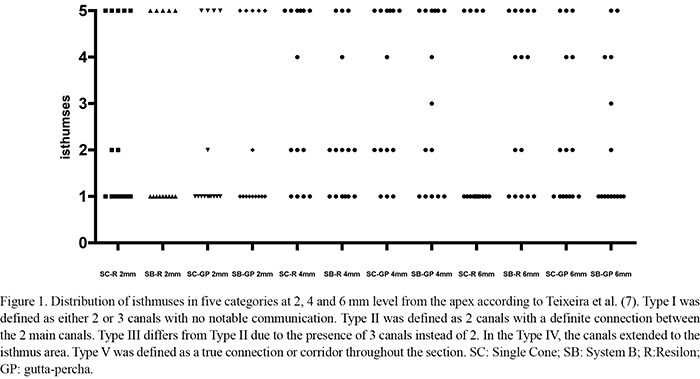The aim of this laboratory study was to compare the interfacial adaptation of an epoxy-resin and a self-etch sealer in mesial root canals of mandibular molars filled using the System-B/Elements Obturation Unit. Sixty mesial root canals of mandibular molars were prepared using the K3 rotary system up to 35.04 instrument and then filled with the aid of the System-B/Elements Obturation Unit using either gutta-percha/ThermaSeal Plus (n=15) or Resilon/Real Seal SE (n=15). The single cone technique using both materials was used as control. The sealers were stained with Rhodamine B dye and the teeth were filled and sectioned at 2, 4 and 6 mm from the apex. The interfacial marginal adaptation of sealers was evaluated using confocal microscopy. Statistical analyses were performed by the Kruskall-Wallis test (α=0.05). In general, microscopic analysis showed a quite regular gap distribution pattern at sealer-dentin interfaces, mainly for the two groups filled with Real Seal SE. This means that both nonbonding root-filling groups (ThermaSeal Plus) showed significantly higher amount of gap-free regions regardless of the filling technique (p<0.05). Better marginal adaptation was obtained with gutta-percha and epoxy resin-based sealer using either the system B or the single cone technique.
confocal laser scanning microscopy; dentin; root canal filling; gutta-percha; Resilon




